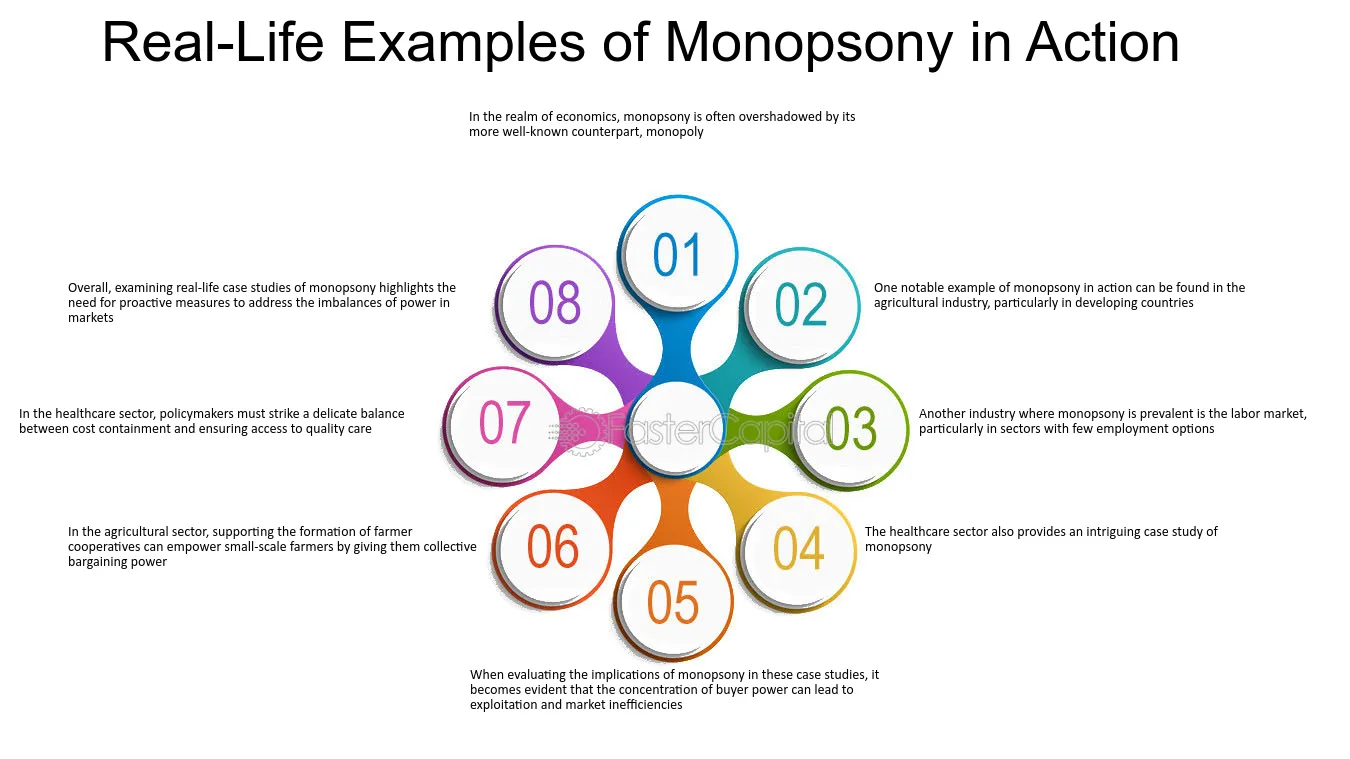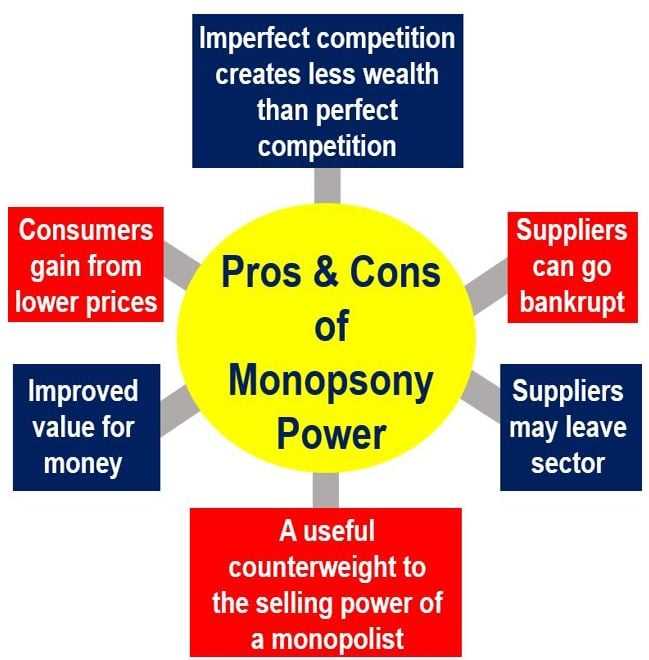Definition and Explanation of Monopsony

Monopsony is a market structure in which there is only one buyer for a particular product or service. In other words, it is a situation where a single buyer has significant market power and can dictate the terms of trade to sellers. This is the opposite of a monopoly, where there is only one seller in the market.
Characteristics of Monopsony
There are several key characteristics of a monopsony:
- Single Buyer: There is only one buyer in the market, which gives them significant market power.
- Barriers to Entry: There are barriers to entry that prevent other buyers from entering the market and competing with the monopsonist.
- Imperfect Information: Sellers may not have perfect information about the buyer’s preferences, which can make it difficult for them to negotiate favorable terms.
Effects of Monopsony
Monopsonies can have several effects on the market:
- Lower Prices: Monopsonies can negotiate lower prices with sellers, which can lead to lower prices for consumers.
- Reduced Quantity: Monopsonies may choose to purchase a lower quantity of the product or service, which can reduce the overall supply in the market.
- Reduced Innovation: Monopsonies may discourage innovation by setting low prices and not providing incentives for sellers to invest in research and development.
- Market Distortion: Monopsonies can distort the market by exerting their market power and preventing other buyers from entering and competing.
Causes and Factors Contributing to Monopsony

1. Barriers to Entry
One of the main causes of monopsony is the presence of barriers to entry in a market. These barriers can include high startup costs, government regulations, or exclusive contracts. When potential competitors are unable to enter the market due to these barriers, the monopsonist is able to maintain their dominant position and exert control over suppliers.
2. Market Concentration

Market concentration refers to the degree to which a market is dominated by a small number of buyers. When there are only a few buyers in a market, they have more bargaining power and can dictate terms to suppliers. This concentration of market power can lead to monopsonistic behavior and reduce competition.
3. Economies of Scale
4. Information Asymmetry
Information asymmetry occurs when one party in a transaction has more information than the other party. In the case of monopsony, the buyer often has more information about market conditions, supplier costs, and alternative options. This information advantage allows the monopsonist to negotiate lower prices and terms with suppliers, further consolidating their market power.
5. Government Intervention
In some cases, government intervention can contribute to the existence of monopsonies. Government regulations or policies that limit competition or create barriers to entry can give certain buyers a dominant position in the market. This can lead to reduced competition and the emergence of monopsonistic behavior.
Overall, monopsonies can arise from a combination of factors, including barriers to entry, market concentration, economies of scale, information asymmetry, and government intervention. These factors contribute to the imbalance of power between buyers and suppliers, leading to reduced wages, output, and competition in the market.

Emily Bibb simplifies finance through bestselling books and articles, bridging complex concepts for everyday understanding. Engaging audiences via social media, she shares insights for financial success. Active in seminars and philanthropy, Bibb aims to create a more financially informed society, driven by her passion for empowering others.
